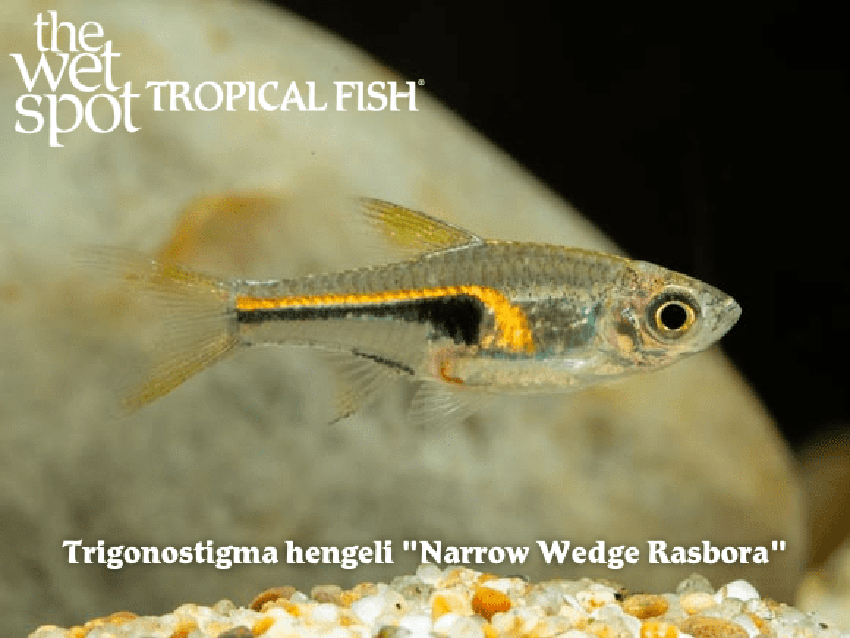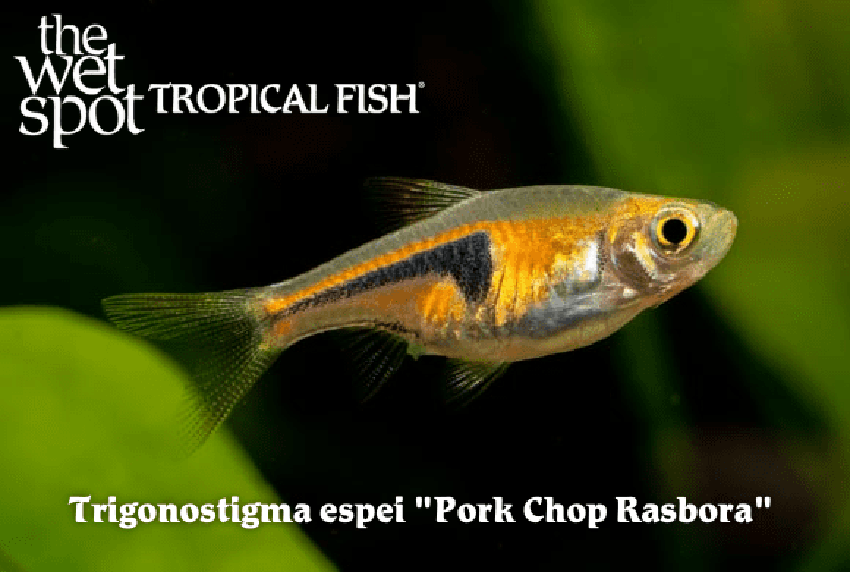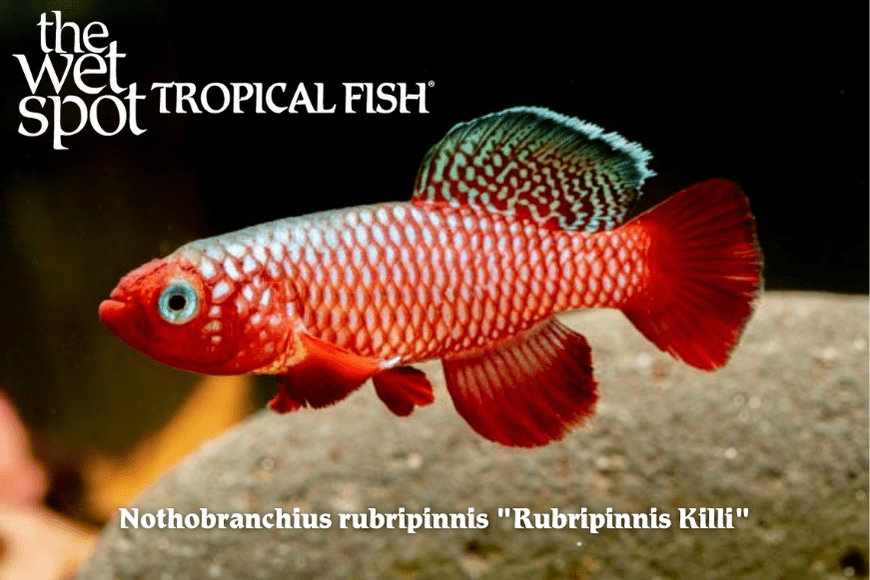Feast For The Eyes
Everyone needs a good night out. A little dinner and a show, but since we may not be able to safely rejoin society for these activities quite yet, The Wet Spot would like to invite you to an intimate dinner party you can enjoy from home. No, not a virtual event, something a little more old-school and long-lasting. Rather, a feast for the eyes, courtesy of the Rasboras in your personal tanks.
Restricted to the forest streams of the Greater Sunda Islands, Trigonostigma hengeli is our delicate salad course. Commonly referred to as “Narrow Wedge Rasboras”, they reach up to 1.5 inches in length and have light, almost translucent bodies with a…you guessed it…narrow wedge of purple with a thin red border down their sides.

Scientific Name:
Trigonostigma hengeli
Common Name:
Narrow Wedge Rasbora
Temperature:
74° – 82° / 5.5 to 7.0 pH
Native Location:
The forest streams of the Greater Sunda Islands
Preferred Diet:
Omnivore
Found in the slow-moving sections of forest streams in Thailand and Cambodia, Trigonostigma espei is the main course with a side of dense aquatic vegetation. Known as “Pork Chop Rasboras”, these Southeast Asian Cyprinids reach up to 1.5 inches in length, and truly resemble little pork chops with a dark lateral stripe resembling the bone and meaty red coloration surrounding it.
Scientific Name:
Trigonostigma espei
Common Name:
Pork Chop Rasbora
Temperature:
74° – 82° / 5.5 to 7.0 pH
Native Location:
The slow-moving sections of forest streams in Thailand and Cambodia
Preferred Diet:
Omnivore

Widely distributed in peat swamps of Southeast Asia, Trigonostigma heteromorpha is our evening’s entertainment. Since you can’t have dinner without a show, these “Harlequin Rasboras” pantomime for us, clad in costumes with black diamond markings and white and red trim. The largest of the three, with huge specimens reaching nearly 2 inches in length, they peacefully flit to and fro in the upper reaches of aquaria.
All wonderful choices for small, aquascaped community tanks, these Rasboras are undemanding with regards to decor, leaving the creative window open. Generally found among dense aquatic, or submerged riparian vegetation in the wild, Trigonostigma do best in planted tanks with floating plants to provide shade, furnishings like driftwood, or rocks placed to form caves and crevices, and dark substrate with a layer of leaf litter to simulate blackwater environments. Incredibly peaceful by nature, these little schooling Cyprinids should be kept in groups of at least 8 and may be housed alongside other Rasboras or small Cyprinids, Livebearers, Loaches, Dwarf Cichlids, and small, peaceful Catfish. They are micro-predators in the wild, munching small insects and zooplankton, and should be fed regular live and frozen meals to enhance their natural coloration. Otherwise, they are not particularly picky and may be fed high-quality flakes and granules. Tank waters are best maintained with soft, acidic conditions with hardness no higher than 179 ppm, a pH between 5.5 and 7, and temperatures stable between 74°F and 82°F.
Because sometimes, we need to make our own fun. Bon appétit aquarists!

Scientific Name:
Nothobranchius rubripinnis
Common Name:
Rubripinnis Killi
Temperature:
68° – 80° / 6.0 to 7.5 pH
Native Location:
The ephemeral pools of East Africa
Preferred Diet:
Omnivore
